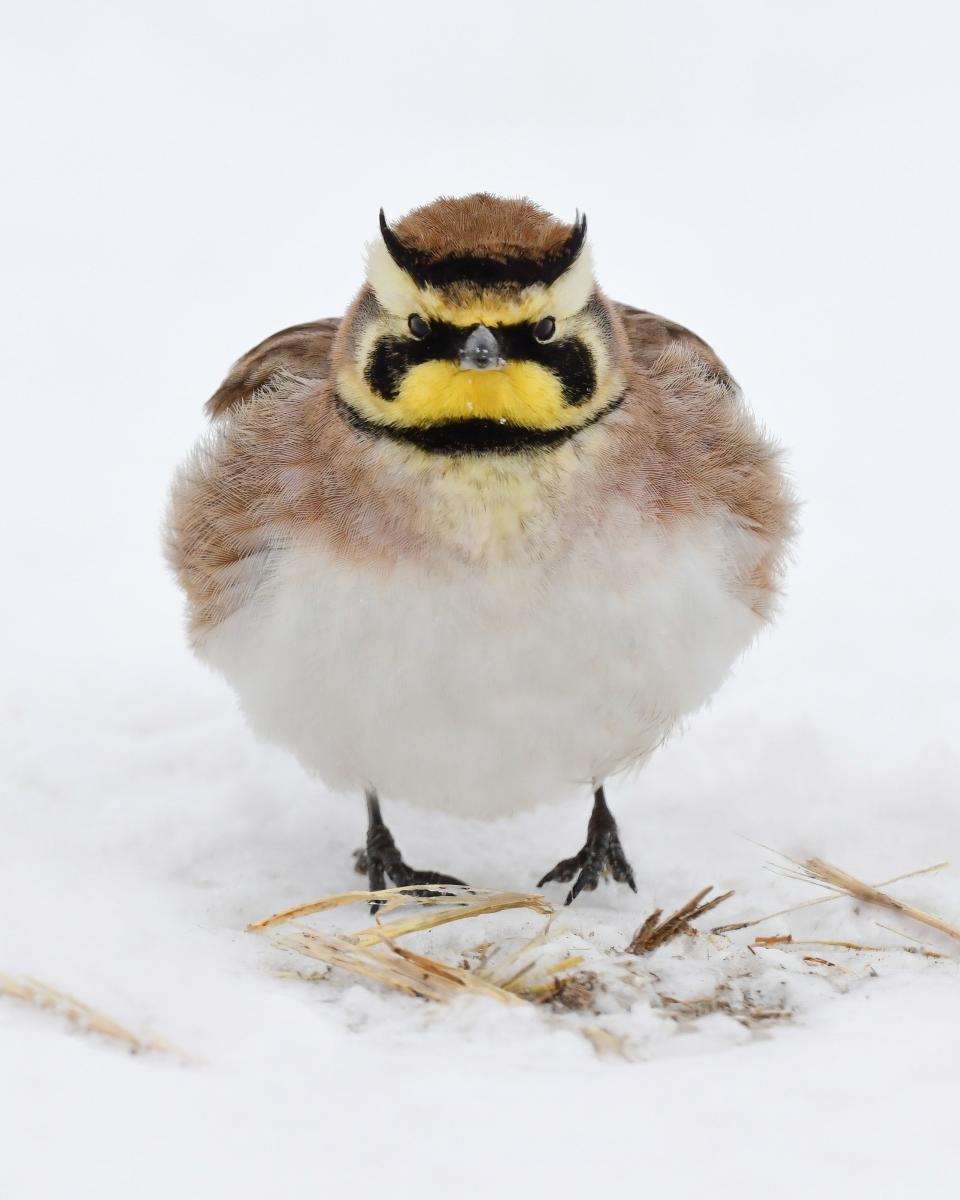Horned lark named Wisconsin's 'chonkiest, floofiest bird'
MADISON — The hefty horned lark has been crowned the winner of Fat Bird Week.
Just as Katmai National Park and Preserve has "Fat Bear Week," Wisconsin just concluded its first-ever "Fat Bird Week," hosted by the Natural Resources Foundation of Wisconsin. Nearly 8,000 voters weighed in on the race to find Wisconsin's floofiest fowl — its most ample avian — its chonkiest chirper.
"With 60% of the votes, the Hefty Horned Lark takes home the gold as Wisconsin's chonkiest, floofiest bird," the NRF announced Tuesday.
Horned larks are the only lark species native to North America. According to the American Bird Conservancy, their "horns" are curled tufts of feathers generally exhibited by males during the breeding season. They are some of the earliest nesting birds in southern Wisconsin.

These songbirds enjoy habitats with bare ground or short vegetation, and can be found year-round throughout most of the United States.
Chief among the goals of the first Fat Bird Week was to "get the word out about the things that people can do to help Wisconsin's birds," NRF communications director Shelly Torkelson told the Milwaukee Journal Sentinel.
A 2019 study conducted by a collection of bird and conservation organizations found that North America had lost nearly 30% of its breeding bird population since 1970 — nearly 3 billion birds. More than 90% of those losses came from common birds like sparrows, blackbirds, warblers and finches.
The study's authors concluded that "we're going to continue to lose bird species and maybe suffer a collapse if we don't make changes," Lisa Gaumnitz, coordinator with SOS Save Our Songbirds, told the Journal Sentinel.
"So Fat Bird Week … is all about giving people something positive they can do at home, in helping make sure that that the birds that they love to see in their backyard are something that are going to be there for the next generation," Gaumnitz said.
What can people do to keep birds healthy and hefty?
NRF and SOS Save Our Songbirds highlighted four things:
Add native trees, shrubs and wildflowers to your yard, patio or balcony. That will help provide food (including insects) and shelter for birds and their babies.
If you have a window that birds collide with, take action to make it more visible. You can use soap or tempera paint to make markings, apply decals or dot patterns, hang "zen curtains," or use insect screens, netting or one-way transparent film. A 2014 study found that about 1 billion birds die in the U.S. every year as a result of window collisions.
If you're a coffee drinker, buy certified Smithsonian Bird Friendly beans. They're produced in a sustainable, environmentally-friendly way that helps preserve migratory birds' southern habitats.
Participate in NRF's Great Wisconsin Birdathon — the state's largest fundraiser for bird conservation, during which participants log bird sightings and raise money. Since 2012, the Birdathon has raised more than $900,000.
Jessie Opoien can be reached at jessie.opoien@jrn.com.
This article originally appeared on Milwaukee Journal Sentinel: Horned lark named winner of 'Fat Bird Week' in Wisconsin

